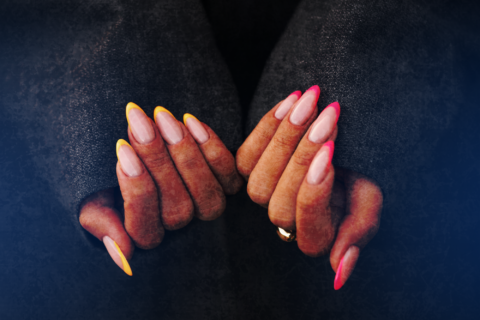Choosing the right tie can elevate your formal attire from simple to sophisticated. Whether you’re dressing for a wedding, a business meeting, or a formal event, the tie you choose can make a significant impact on your overall look.
Guide on how to pick the perfect tie for your formal dress
If you plan to wear a tie, it must be a special occasion. So, it demands special preparation.
A well-chosen tie can elevate your formal attire and make a powerful style statement. However, with so many options available, selecting the perfect tie can be a bit challenging. To help you make the right choice, here are seven tips to consider when picking a tie for your formal outfit.
1. Consider the Occasion
The occasion plays a crucial role in determining the appropriate tie. For formal events like weddings, business meetings, or black-tie dinners, opt for classic and elegant ties. Solid colors, subtle patterns, or understated textures are ideal for such events. On the other hand, for semi-formal or creative gatherings, you can experiment with bolder patterns and colors.
For business settings, conservative ties in solid colors or simple patterns like stripes or small dots work best. For celebratory events, you can choose ties with richer textures or more vibrant colors.
2. Match the Tie with Your Suit
Your tie should complement your suit and create a harmonious look. When matching a tie with your suit, consider the color, pattern, and texture. A simple rule of thumb is to pair a solid-colored suit with a patterned tie or a patterned suit with a solid-colored tie. This contrast adds visual interest without overwhelming the outfit.
For a navy or charcoal suit, almost any tie color will work, but sticking to classic shades like burgundy, dark green, or blue can never go wrong. If you’re wearing a lighter suit, such as beige or light grey, opt for pastel or light-colored ties for a balanced look.
3. Pay Attention to the Fabric
The fabric of your tie can significantly impact its appearance and suitability for different occasions. Silk ties are the most versatile and suitable for nearly any formal event due to their smooth texture and elegant sheen. Wool ties are great for cooler months and provide a sophisticated, matte finish that pairs well with tweed or heavier fabrics.
Linen ties are perfect for summer or less formal occasions, offering a light and airy look. Knit ties, with their unique texture, add a touch of personality and can be worn in both formal and smart-casual settings. Choosing the right fabric helps ensure your tie complements the overall texture of your outfit.
4. Get the Length and Width Right
The length and width of your tie should be proportional to your body type and suit style. A tie should ideally reach your belt buckle. If it’s too short or too long, it will look awkward and unpolished. Most standard ties are around 57-58 inches long, which works for average-height individuals. If you’re taller, consider getting a longer tie.
The width of the tie should match the width of your suit lapels. Slim ties (around 2.5-3 inches wide) work well with narrow lapels and modern suits, while wider ties (3.5-4 inches) are better suited for traditional suits with broader lapels. Choosing the right proportions helps create a balanced and cohesive look.
5. Coordinate with Your Shirt
Your tie and shirt should work together to create a harmonious ensemble. A solid-colored shirt pairs well with almost any tie, allowing you to experiment with patterns and colors. For patterned shirts, choose a tie with a pattern that complements rather than clashes with the shirt.
For example, a striped shirt can be paired with a solid or subtly patterned tie. If you opt for a patterned tie, ensure that one of the colors in the tie matches the dominant color of your shirt. This coordination ensures a polished and cohesive appearance.
6. Experiment with Patterns and Colors
While classic solid ties are always a safe bet, don’t be afraid to experiment with patterns and colors to add a touch of personality to your outfit. Stripes, polka dots, paisleys, and geometric patterns can all be stylish choices if paired correctly.
When mixing patterns, keep the scale in mind. Pair a larger pattern with a smaller one to avoid a busy look. For instance, a wide-striped tie works well with a narrow-striped shirt. When it comes to colors, complementary colors or shades within the same color family create a cohesive look. For example, a burgundy tie can pair beautifully with a light pink shirt.
7. Mind the Knot
The knot you choose can influence the overall appearance of your tie and outfit. The four-in-hand knot is a versatile and slightly asymmetrical knot that works well with most collars and ties. The half-Windsor knot is a bit more formal and symmetrical, suitable for medium-width collars.
For a more substantial and formal look, the full Windsor knot is ideal, creating a wide and symmetrical triangle. This knot pairs well with spread or cutaway collars. Ensure the knot is appropriate for the occasion and complements the style of your shirt and tie.
Conclusion
Choosing the perfect tie for your formal attire involves considering the occasion, matching it with your suit, paying attention to the fabric, getting the right length and width, coordinating with your shirt, experimenting with patterns and colors, and selecting the appropriate knot. By following these tips, you can elevate your formal look and make a lasting impression. Remember, the key is to create a balanced and cohesive ensemble that reflects your personal style and the formality of the event. Happy styling!




